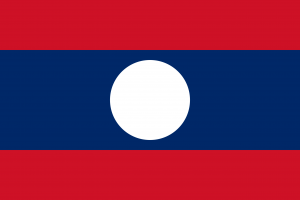Difference between revisions of "Language/Lao/Grammar/Adjectives"
m (Quick edit) |
m (Quick edit) |
||
| Line 52: | Line 52: | ||
<hr>If you have any questions, please ask them in the comments section below.<br>Feel free to edit this wiki page if you think it can be improved. 😎 | <hr>If you have any questions, please ask them in the comments section below.<br>Feel free to edit this wiki page if you think it can be improved. 😎 | ||
==Related Lessons== | ==Related Lessons== | ||
* [[Language/Lao/Grammar/Questions|Questions]] | * [[Language/Lao/Grammar/Questions|Questions]] | ||
* [[Language/Lao/Grammar/How-to-Use-Be|How to Use Be]] | |||
* [[Language/Lao/Grammar/Future-Tense|Future Tense]] | * [[Language/Lao/Grammar/Future-Tense|Future Tense]] | ||
* [[Language/Lao/Grammar/Conditional-Mood|Conditional Mood]] | |||
* [[Language/Lao/Grammar/How-to-Use-Have|How to Use Have]] | |||
* [[Language/Lao/Grammar/Negation|Negation]] | |||
* [[Language/Lao/Grammar/Give-your-Opinion|Give your Opinion]] | |||
* [[Language/Lao/Grammar/Pronouns|Pronouns]] | |||
* [[Language/Lao/Grammar/Personal-pronouns|Personal pronouns]] | * [[Language/Lao/Grammar/Personal-pronouns|Personal pronouns]] | ||
{{Lao-Page-Bottom}} | {{Lao-Page-Bottom}} | ||
Revision as of 12:38, 6 March 2023
Hi Lao learners! 😊
In today's lesson, we will be discussing adjectives in the Lao language. Adjectives are words that describe or modify nouns and pronouns. They can be used to give more information about a person, place, thing, or idea. In this lesson, we will look at how to use adjectives in Lao, as well as some common examples.
Adjective Placement
In Lao, adjectives usually come after the noun they are describing. For example:
- ບໍ່ແມ່ນເຮືອນສີແດງ (bòmèn hèuan sī dèng) - Not a red house
However, there are some exceptions to this rule. For example, when using certain adverbs, the adjective may come before the noun. For example:
- ສີແດງທັງໝົດ (sī dèng thang mōt) - All red
Adjective Agreement
In Lao, adjectives must agree with the noun they are describing in terms of gender and number. For example:
- ຫນຶ່ງຄົນຊາຍ (nèung kon sai) - One man
- ສອງຄົນຫຍັງ (sǿng kon yang) - Two women
Common Adjectives
Here are some common adjectives in Lao:
- ສີ (sī) - Color
- ຂຽວ (khuay) - Big
- ນ້ອຍ (nǿy) - Small
- ຊັດ (sat) - Clear
- ຊັ້ນ (san) - High
- ຕ່ຳ (tam) - Low
- ກວ້າງ (kwang) - Wide
- ຫນາ (naa) - Thick
- ຫນ້ອຍ (nǿy) - Thin
- ຊັ້ນ (san) - Tall
- ຕົ້ນ (ton) - Short
Examples
Here are some examples of adjectives in Lao:
- ບໍ່ແມ່ນເຮືອນສີແດງ (bòmèn hèuan sī dèng) - Not a red house
- ສີແດງທັງໝົດ (sī dèng thang mōt) - All red
- ຫນຶ່ງຄົນຊາຍ (nèung kon sai) - One man
- ສອງຄົນຫຍັງ (sǿng kon yang) - Two women
- ຂຽວກວ້າງ (khuay kwang) - Big and wide
- ນ້ອຍຫນ້ອຍ (nǿy nǿy) - Small and thin
If you have any questions, please ask them in the comments section below.
Feel free to edit this wiki page if you think it can be improved. 😎
Related Lessons
- Questions
- How to Use Be
- Future Tense
- Conditional Mood
- How to Use Have
- Negation
- Give your Opinion
- Pronouns
- Personal pronouns
